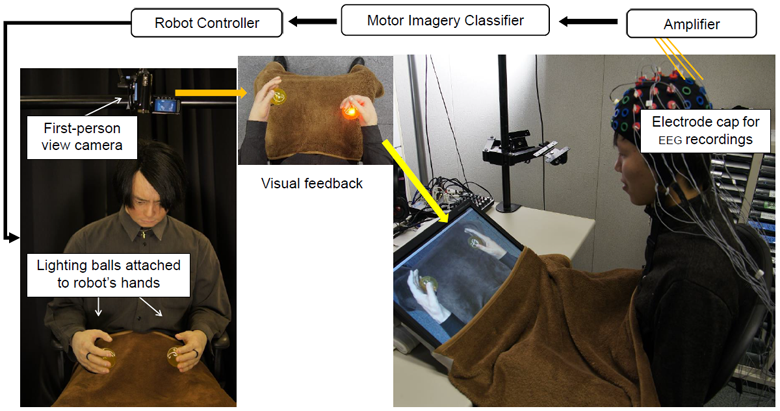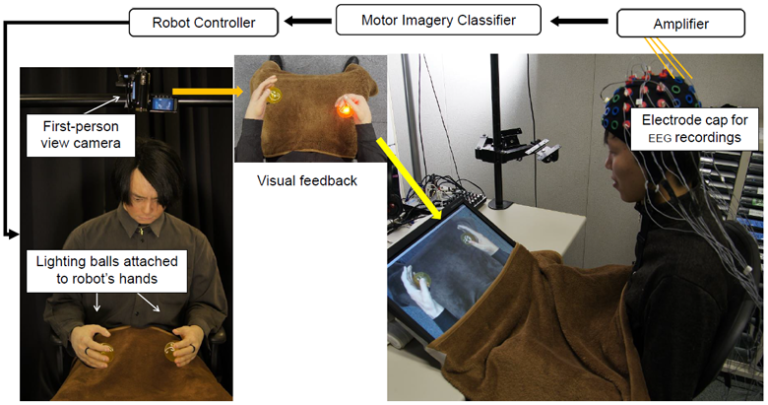
EEG-based brain computer interface (BCI) systems have demonstrated potential to assist patients with devastating motor paralysis conditions. However, there is great interest in shifting the BCI trend toward applications aimed at healthy users. Although BCI operation depends on technological factors (i.e., EEG pattern classification algorithm) and human factors (i.e., how well the person can generate good quality EEG patterns), it is the latter that is least investigated. In order to control a Motor Imagery based BCI, users need to learn to modulate their sensorimotor brain rhythms by practicing Motor Imagery using a classical training protocol with an abstract visual feedback. In this paper, we investigate a different BCI training protocol using a human-like android robot (Geminoid HI-2) to provide realistic visual feedback. The proposed training protocol addresses deficiencies of the classical approach and takes advantage of body-abled user capabilities. Experimental results suggest that android feedback based BCI training improves the modulation of sensorimotor rhythms during motor imagery task. Moreover, we discuss how the influence of body ownership transfer illusion toward the android might have an effect on the modulation of event-related desynchronization/synchronization (ERD/ERS) activity.

